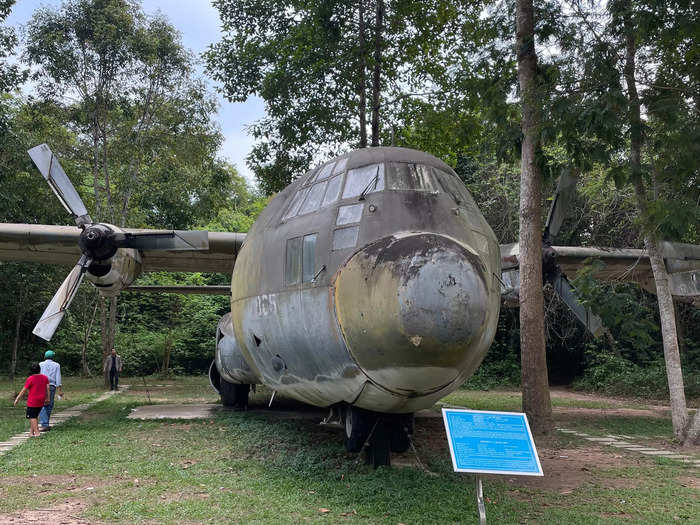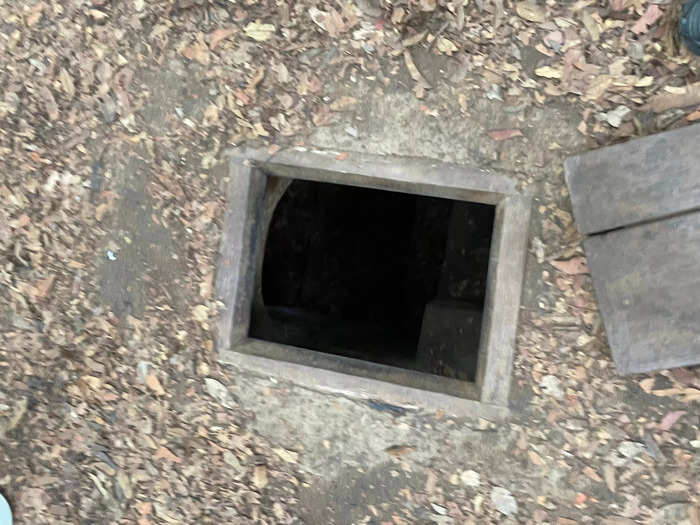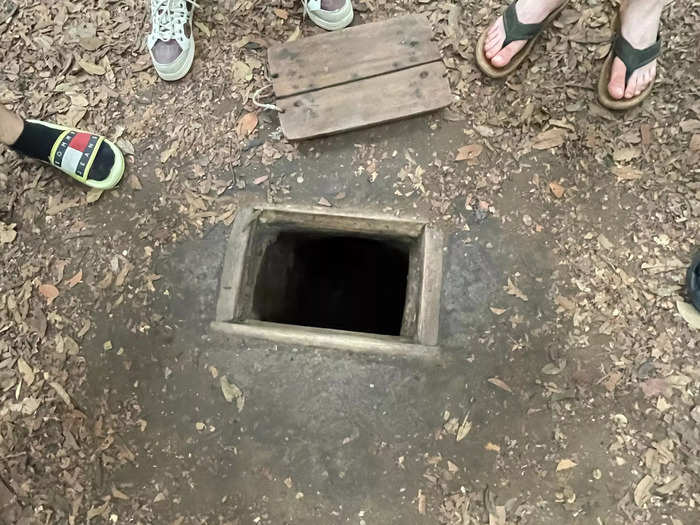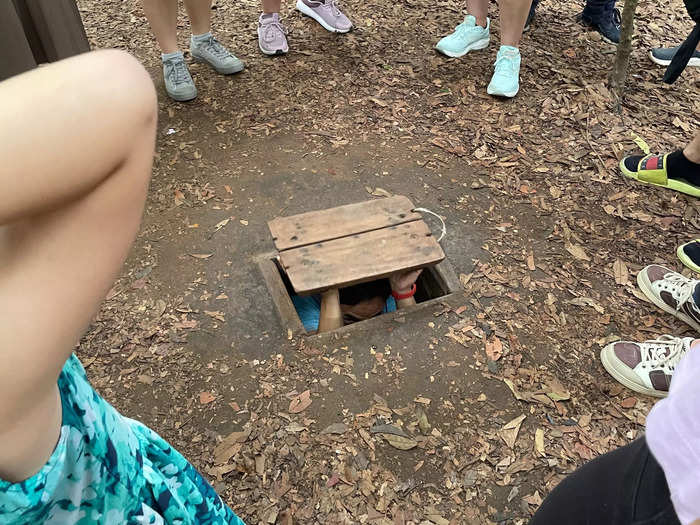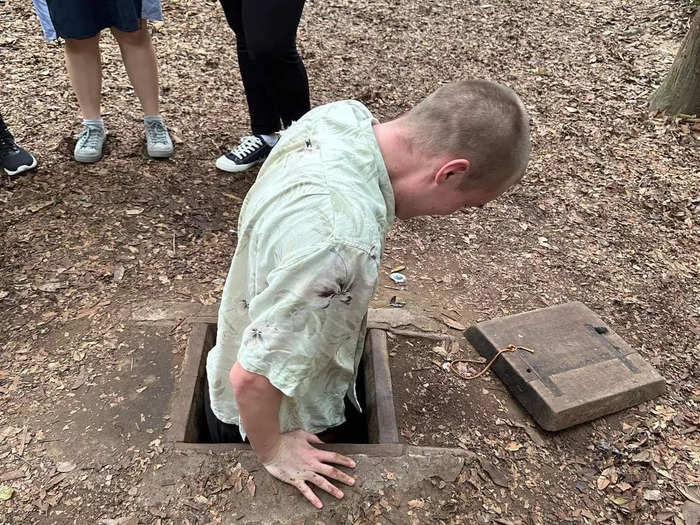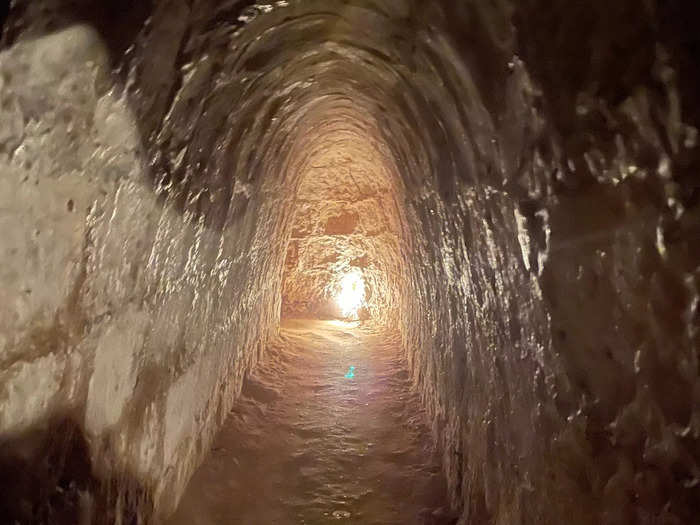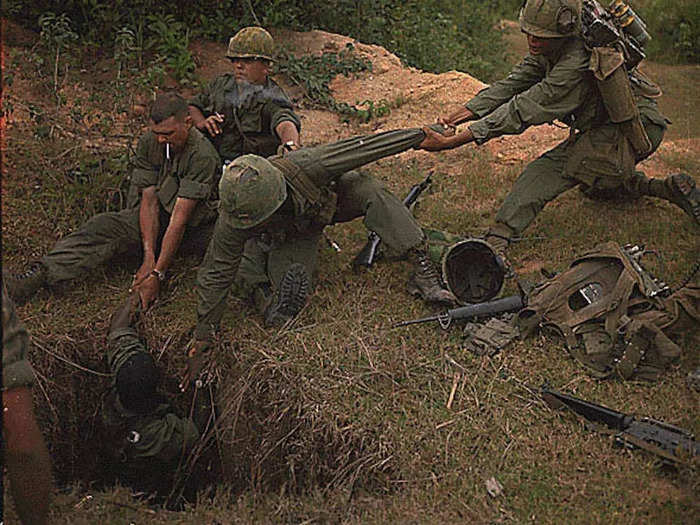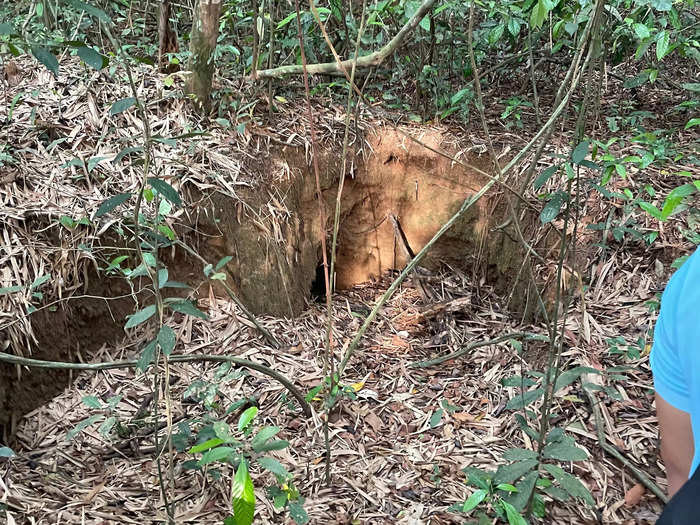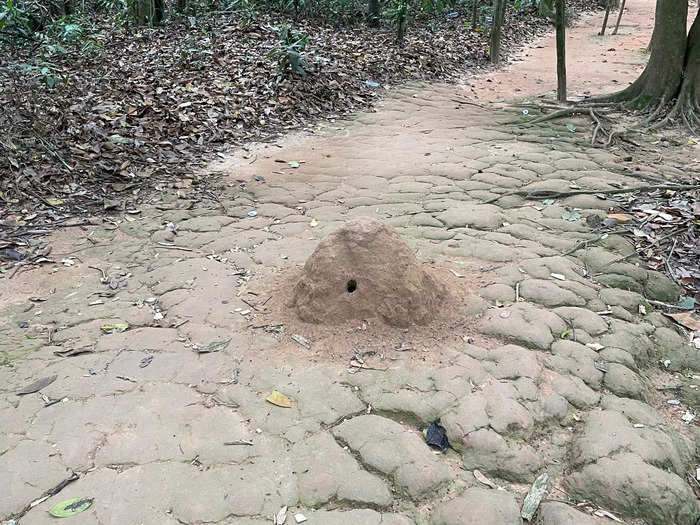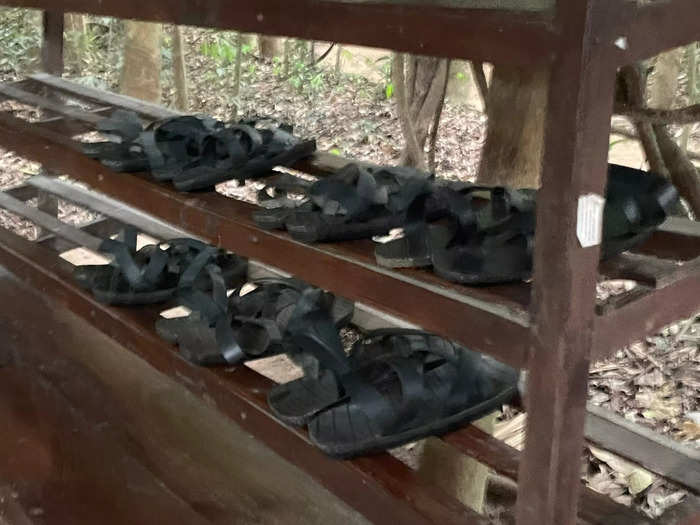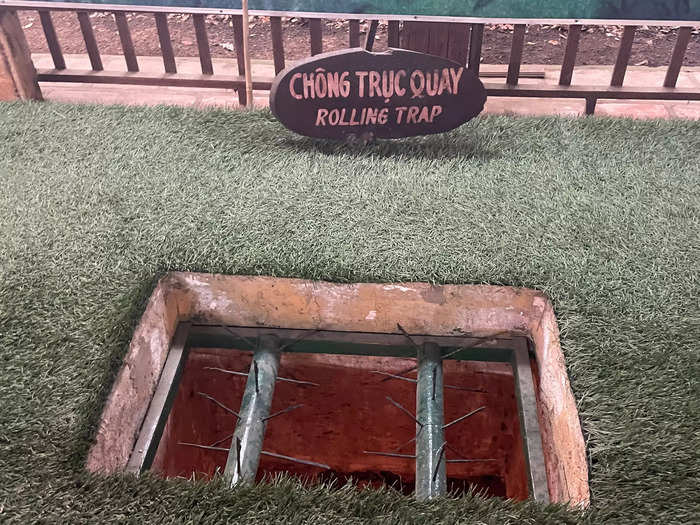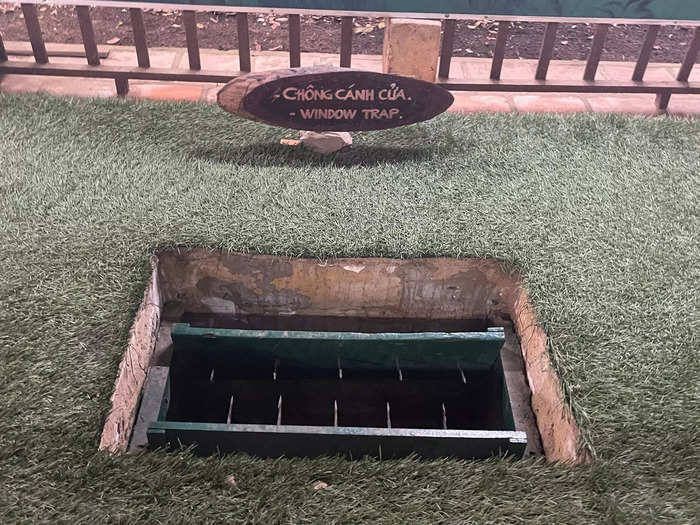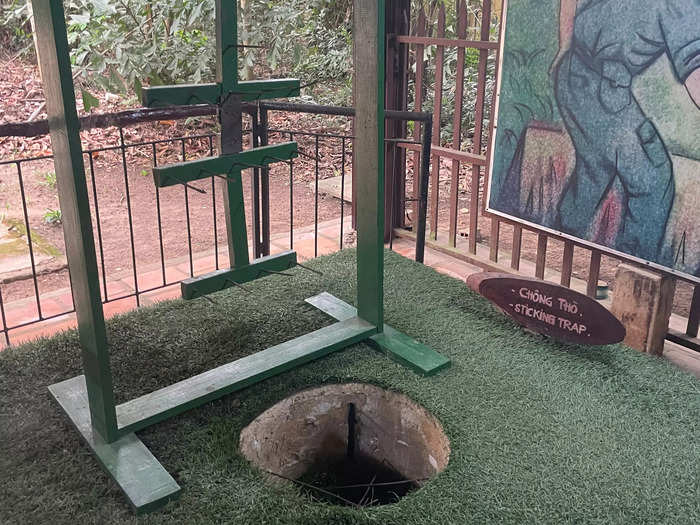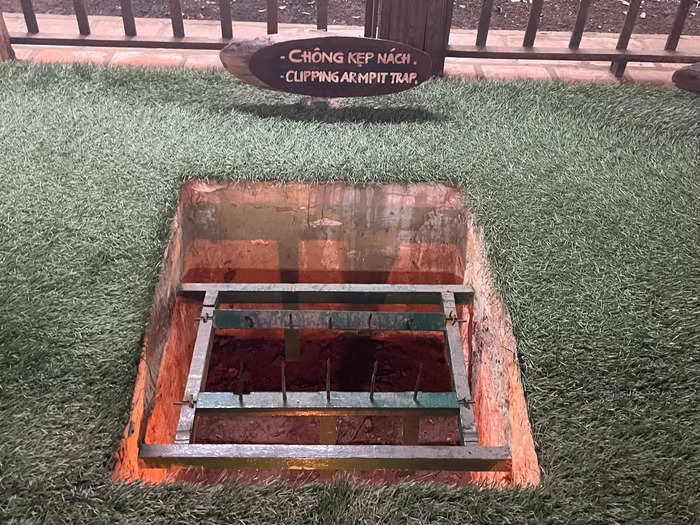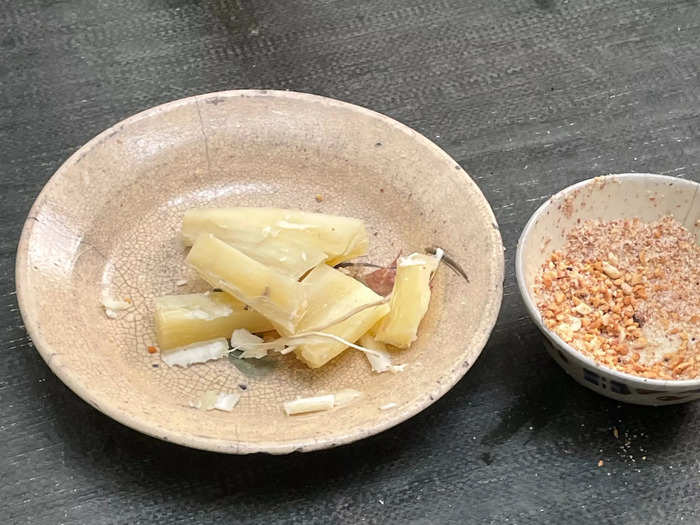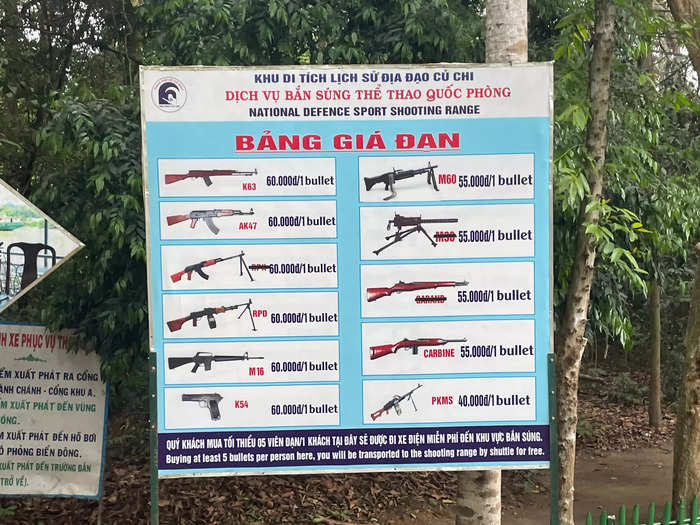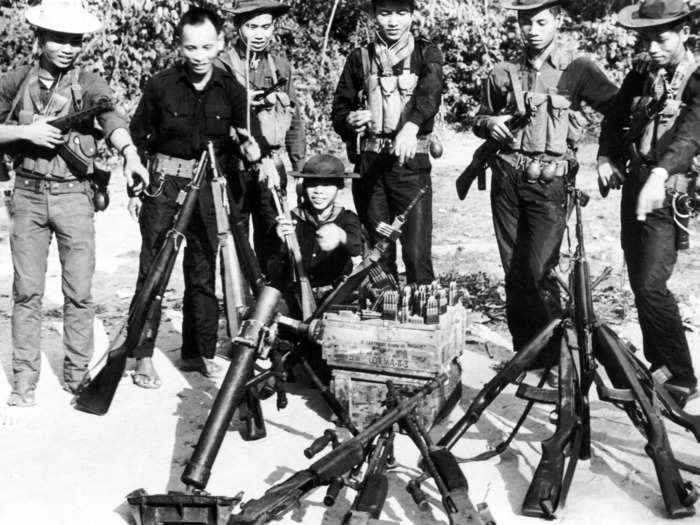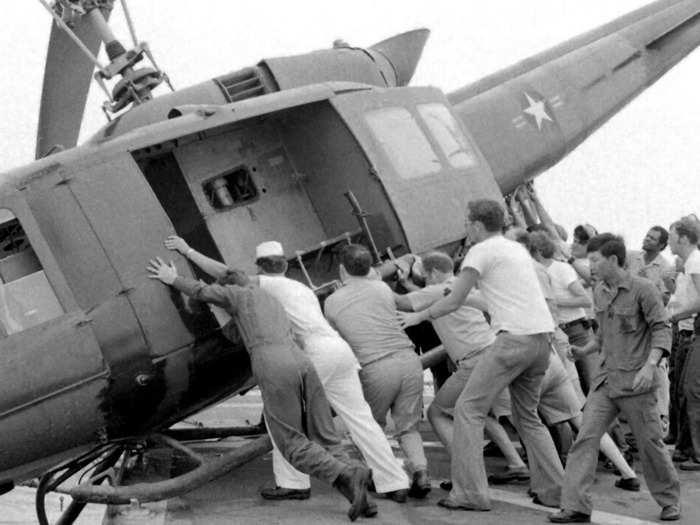Markus Egolf/Getty Images
- I had the opportunity to visit the Cu Chi Tunnels, which are just outside Ho Chi Minh City, Vietnam.
- The tunnel network was started in the late 1940s and used by the Viet Cong during the Vietnam War.
I was recently lucky enough to visit Southeast Asia, traveling through both Vietnam and Cambodia.
One of the most memorable parts of my trip, and indeed my life, was an excursion to the Cu Chi Tunnels near Ho Chi Minh City in the south of Vietnam.
The tunnel network were started in the 1940s as communist forces faced off against French colonial troops in the first Indochina War. They provided a subterranean world from which the Vietnamese guerilla fighters - the Viet Cong - could launch attacks and hideout.
With the onset of the war against the US in the 1960s — which ended up claiming the lives of over 58,000 US soldiers — the Viet Cong gradually began to expand the tunnel network.
The tunnels "provided the Viet Cong with manufacturing, resupply, and planning space within easy striking distance of their targets," according to The National Museum of the United States Army.
As bombing raids and smoke tactics failed to prevent the threat posed by the tunnels, the US began sending soldiers, who became known as "tunnel rats," into the tunnels to clear them.
Inside, the tunnel rats faced danger at every corner, and they had to watch out for ambushes, booby traps, venomous snakes, scorpions, spiders, bats, and mosquitoes, among other things.
Take a look inside the stifling tunnels, one of the Vietnam War's best-preserved relics.
After around a two-hour journey from my hostel in Ho Chi Minh City, formally known as Saigon, I arrived at Ben Duoc Tunnels, one of the two Cu Chi Tunnels tourist spots open to the public. There were relics of the war on display around the site, including this US C-130 plane.
Nathan Rennolds/Insider
Stepping off of our tour's minibus, we were greeted by the constant, deafening sound of cicada insects in the jungle surrounding the tunnels.
Nathan Rennolds/Insider
As we made our way through the jungle, our guide showed us some of the entrances used by the Viet Cong to access the tunnels. He told us that they were multi-layered and included rooms for cooking, medical treatment, and weapons caches.
Nathan Rennolds/Insider
The holes were incredibly small and eerie, appearing to disappear into a dark void.
Nathan Rennolds/Insider
But our guide was less apprehensive, hopping into the tunnel and showing us how Viet Cong soldiers would enter while replacing the cover over the entrance.
Nathan Rennolds/Insider
We had the opportunity to get into the tunnels ourselves, which was no mean feat. It was an extremely tight squeeze, but I just about managed to lower myself down into the labyrinth below.
Nathan Rennolds/Insider
Inside, the tunnels offered an unforgettable experience. The tiny passageways were stiflingly hot and claustrophobic, and I had to crouch or crawl to get through — despite some tunnels having been made larger for tourists.
Nathan Rennolds/Insider
US 'tunnel rats' hunt the enemy: At the peak of the war, the tunnel network around Ho Chi Minh City, then known as Saigon, stretched to around 250 km, which is around 155 miles.
US soldiers at a Viet Cong tunnel during a search and destroy mission in Vietnam, on April 24, 1967. REUTERS/Courtesy U.S. National Archives
Life in the tunnels was incredibly tough for the Viet Cong. They were infested with spiders, snakes, and bats, among other things, while they were also subjected to heavy bombing by US forces.
History/Universal Images Group via Getty Images
Our guide highlighted another former tunnel entrance, even smaller than those we'd seen.
Nathan Rennolds/Insider
Ventilation ducts for the tunnels were disguised as things like termite mounds, our guide told us.
Nathan Rennolds/Insider
Footwear worn by Viet Cong soldiers was designed to leave tracks that appeared to go in the opposite direction, the guide said.
Nathan Rennolds/Insider
There were gruesome reminders of the obstacles faced by soldiers during the war, such as this "rolling trap."
Nathan Rennolds/Insider
The "window trap."
Nathan Rennolds/Insider
The "sticking trap."
Nathan Rennolds/Insider
And the "clipping armpit trap."
Nathan Rennolds/Insider
We also had the chance to try fresh tapioca, the root of the cassava tree. It was the staple food of the Viet Cong stationed in the tunnels.
Nathan Rennolds/Insider
Visitors were also able to go to a shooting range and fire live ammunition, which you had to pay for by the bullet.
Nathan Rennolds/Insider
The tunnels were a striking reminder of a savage war that dragged on from 1955 to 1975.
Captured US weapons on display in 1968, Cu Chi, South Vietnam. History/Universal Images Group via Getty Images
The conflict ended in 1975, with the fall of Saigon, which marked the collapse of the non-communist South Vietnam.
History/Universal Images Group via Getty Images

